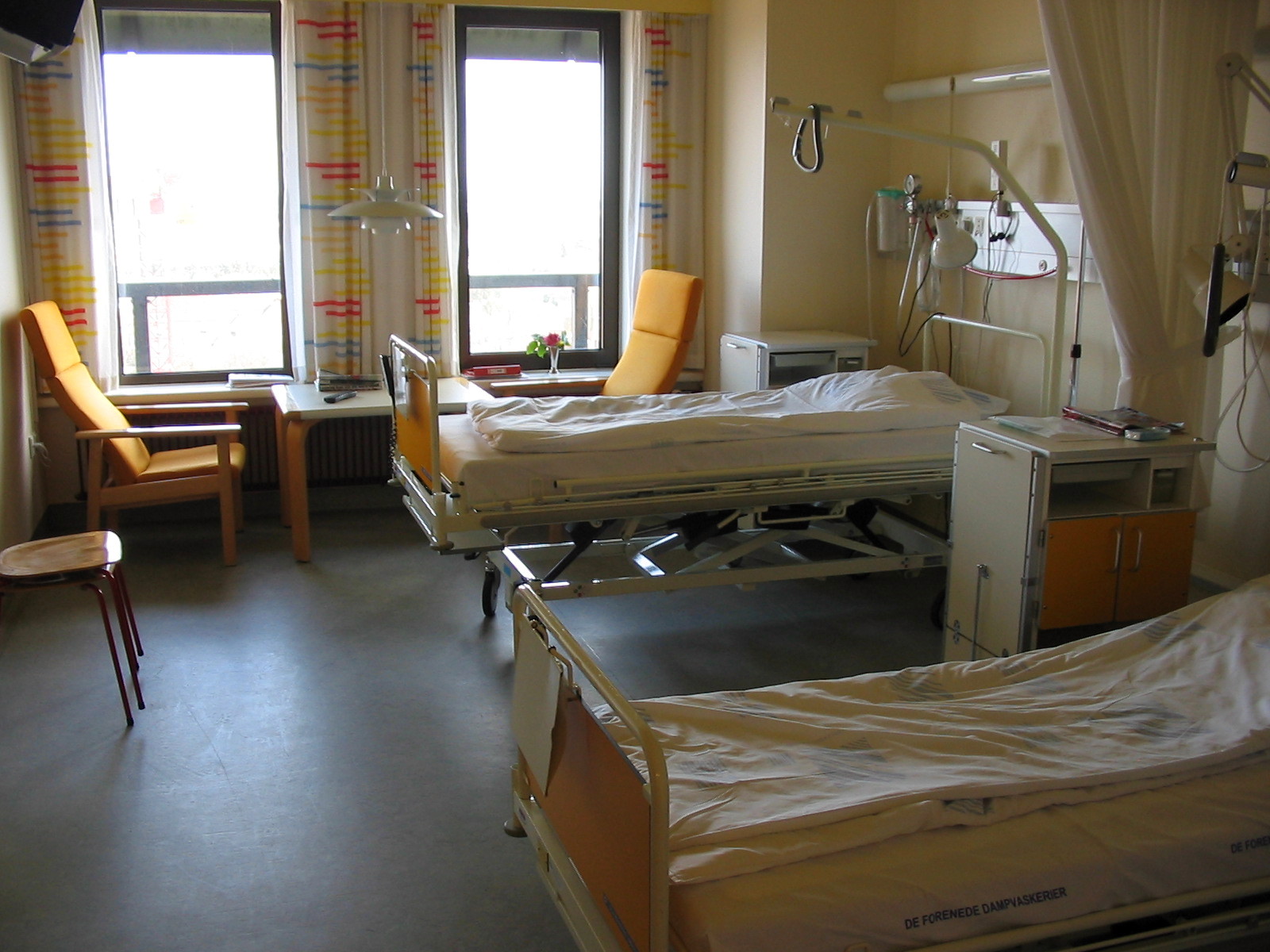
Brace yourselves, Republicans and Libertarians: it turns out Japan’s social safety net provides free healthcare to people that need medical attention but have no money or insurance. It’s like Obamacare’s angry, ‘roided-up samurai cousin.
That’s because there’s a somewhat vaguely-worded provision in Japanese law that states the government is obligated to provide care for those with “troubled livelihoods,” at low or no cost, regardless of insurance coverage. “Troubled livelihood” is kind of a broad definition, which ensures that those without the means to pay for medical treatment – even if they aren’t necessarily poor, homeless or unable to work – can still see a doctor.
So, naturally, a blogger who most likely always wears a tacky suit with sparkly yen symbols on it took to Yahoo! Japan to explain how average people can wriggle their way through this loophole to free treatment.
The trick apparently lies in the fact that it’s not the patient that receives government money to pay for care, but the hospitals themselves that receive the money, which they then subtract from the fees of those they deem to meet the provision’s criteria.
Since the definition of “troubled livelihood” is left up to the individual hospitals, anyone could potentially meet it. We’re guessing if you’re an American that went to college, you probably qualify automatically by showing them your soul-crushingly expensive student loan bills. Couple this with the fact that the government’s allotted budget for this particular provision has been increasing in recent years, and you’ve got a recipe for free doctor visits for a huge number of people, at a huge number of hospitals and clinics.
We’re not saying this blogger is telling everyone they should show up to the hospital, pat their pants pockets, shrug and say, “Aaw, shoot, I guess I forgot my wallet…,” but we’re also not saying that isn’t a great idea anyway.
Source: Yahoo! Japan
Photos: Feature, Inset


 Japan’s amazing healthcare system summed up in photo of hospital bill for father’s heart surgery
Japan’s amazing healthcare system summed up in photo of hospital bill for father’s heart surgery 6 surprising things about having a baby in Japan
6 surprising things about having a baby in Japan Kyoto families angered by new policy forcing high school students to buy tablets at own expense
Kyoto families angered by new policy forcing high school students to buy tablets at own expense Japan to begin process of distributing vaccine passports, Chief Cabinet Secretary says
Japan to begin process of distributing vaccine passports, Chief Cabinet Secretary says Tokyo’s crazy-luxurious obstetrics clinic delivers babies with service fit for a queen 【Pics】
Tokyo’s crazy-luxurious obstetrics clinic delivers babies with service fit for a queen 【Pics】 McDonald’s new Happy Meals offer up cute and practical Sanrio lifestyle goods
McDonald’s new Happy Meals offer up cute and practical Sanrio lifestyle goods Historical figures get manga makeovers from artists of Spy x Family, My Hero Academia and more
Historical figures get manga makeovers from artists of Spy x Family, My Hero Academia and more Red light district sushi restaurant in Tokyo shows us just how wrong we were about it
Red light district sushi restaurant in Tokyo shows us just how wrong we were about it Japanese ramen restaurants under pressure from new yen banknotes
Japanese ramen restaurants under pressure from new yen banknotes French Fries Bread in Tokyo’s Shibuya becomes a hit on social media
French Fries Bread in Tokyo’s Shibuya becomes a hit on social media Beautiful Red and Blue Star luxury trains set to be Japan’s new Hokkaido travel stars
Beautiful Red and Blue Star luxury trains set to be Japan’s new Hokkaido travel stars Daiso opens massive new 25,392-square foot Tokyo flagship store with its two sub-brands included
Daiso opens massive new 25,392-square foot Tokyo flagship store with its two sub-brands included We try out “Chan Ramen”, an underground type of ramen popular in the ramen community
We try out “Chan Ramen”, an underground type of ramen popular in the ramen community Tokyo Tsukiji fish market site to be redeveloped with 50,000-seat stadium, hotel, shopping center
Tokyo Tsukiji fish market site to be redeveloped with 50,000-seat stadium, hotel, shopping center Kyoto’s 100 Demons yokai monster parade returns!
Kyoto’s 100 Demons yokai monster parade returns! All-you-can-drink Starbucks and amazing views part of Tokyo’s new 170 meter-high sky lounge
All-you-can-drink Starbucks and amazing views part of Tokyo’s new 170 meter-high sky lounge Studio Ghibli releases new action figures featuring Nausicaä of the Valley of the Wind characters
Studio Ghibli releases new action figures featuring Nausicaä of the Valley of the Wind characters New private rooms on Tokaido Shinkansen change the way we travel from Tokyo to Kyoto
New private rooms on Tokaido Shinkansen change the way we travel from Tokyo to Kyoto Studio Ghibli glasses cases let anime characters keep an eye on your spectacles
Studio Ghibli glasses cases let anime characters keep an eye on your spectacles Beautiful Ghibli sealing wax kits let you create accessories and elegant letter decorations【Pics】
Beautiful Ghibli sealing wax kits let you create accessories and elegant letter decorations【Pics】 Studio Ghibli releases Kiki’s Delivery Service chocolate cake pouches in Japan
Studio Ghibli releases Kiki’s Delivery Service chocolate cake pouches in Japan New definition of “Japanese whiskey” goes into effect to prevent fakes from fooling overseas buyers
New definition of “Japanese whiskey” goes into effect to prevent fakes from fooling overseas buyers Our Japanese reporter visits Costco in the U.S., finds super American and very Japanese things
Our Japanese reporter visits Costco in the U.S., finds super American and very Japanese things Studio Ghibli unveils Mother’s Day gift set that captures the love in My Neighbour Totoro
Studio Ghibli unveils Mother’s Day gift set that captures the love in My Neighbour Totoro New Japanese KitKat flavour stars Sanrio characters, including Hello Kitty
New Japanese KitKat flavour stars Sanrio characters, including Hello Kitty More foreign tourists than ever before in history visited Japan last month
More foreign tourists than ever before in history visited Japan last month New Pokémon cakes let you eat your way through Pikachu and all the Eevee evolutions
New Pokémon cakes let you eat your way through Pikachu and all the Eevee evolutions Sales of Japan’s most convenient train ticket/shopping payment cards suspended indefinitely
Sales of Japan’s most convenient train ticket/shopping payment cards suspended indefinitely Sold-out Studio Ghibli desktop humidifiers are back so Totoro can help you through the dry season
Sold-out Studio Ghibli desktop humidifiers are back so Totoro can help you through the dry season Japanese government to make first change to romanization spelling rules since the 1950s
Japanese government to make first change to romanization spelling rules since the 1950s Ghibli founders Toshio Suzuki and Hayao Miyazaki contribute to Japanese whisky Totoro label design
Ghibli founders Toshio Suzuki and Hayao Miyazaki contribute to Japanese whisky Totoro label design Doraemon found buried at sea as scene from 1993 anime becomes real life【Photos】
Doraemon found buried at sea as scene from 1993 anime becomes real life【Photos】 Tokyo’s most famous Starbucks is closed
Tokyo’s most famous Starbucks is closed One Piece characters’ nationalities revealed, but fans have mixed opinions
One Piece characters’ nationalities revealed, but fans have mixed opinions We asked a Uniqlo employee what four things we should buy and their suggestions didn’t disappoint
We asked a Uniqlo employee what four things we should buy and their suggestions didn’t disappoint Princesses, fruits, and blacksmiths: Study reveals the 30 most unusual family names in Japan
Princesses, fruits, and blacksmiths: Study reveals the 30 most unusual family names in Japan Dear Hikers: Stop pooping on Mt. Fuji if you want it to keep its UNESCO status
Dear Hikers: Stop pooping on Mt. Fuji if you want it to keep its UNESCO status The end of the pay phone? Japanese government considering getting rid of phone boxes
The end of the pay phone? Japanese government considering getting rid of phone boxes Young people in Tokyo to be offered points and discounts if they get vaccinated
Young people in Tokyo to be offered points and discounts if they get vaccinated “Bully insurance” now on the rise, with many more practical uses than just insuring bullying
“Bully insurance” now on the rise, with many more practical uses than just insuring bullying City in Aichi reduces water and sewage bills for four months, easing residents’ financial strain
City in Aichi reduces water and sewage bills for four months, easing residents’ financial strain Pocari Sweat offers free self-care packages for those battling COVID-19 at home
Pocari Sweat offers free self-care packages for those battling COVID-19 at home You can now buy bully insurance for your kids in Japan
You can now buy bully insurance for your kids in Japan Kobe hospital gets anonymous 5 million yen cash donation, gives it back, gets it again, keeps it
Kobe hospital gets anonymous 5 million yen cash donation, gives it back, gets it again, keeps it Chinese hospital dresses nurses like flight attendants for some reason 【Video】
Chinese hospital dresses nurses like flight attendants for some reason 【Video】 Survey finds roughly one in four all-night Internet cafe customers in Tokyo is homeless
Survey finds roughly one in four all-night Internet cafe customers in Tokyo is homeless Terrorists release third video of Japanese hostage, say it will be his last
Terrorists release third video of Japanese hostage, say it will be his last Should Japan become the next Vegas or Macao? 57% of Japanese people say “no thanks” in new survey
Should Japan become the next Vegas or Macao? 57% of Japanese people say “no thanks” in new survey Japanese hospital threatens to stab owners of illegally parked cars with needles
Japanese hospital threatens to stab owners of illegally parked cars with needles Japan ratifies child abduction treaty, but some parents may still be left behind
Japan ratifies child abduction treaty, but some parents may still be left behind Yakuza may be blocked from using all expressways in Japan within the decade
Yakuza may be blocked from using all expressways in Japan within the decade If you have an apartment in Japan, your “fire disaster insurance” may also be toilet insurance
If you have an apartment in Japan, your “fire disaster insurance” may also be toilet insurance
Leave a Reply